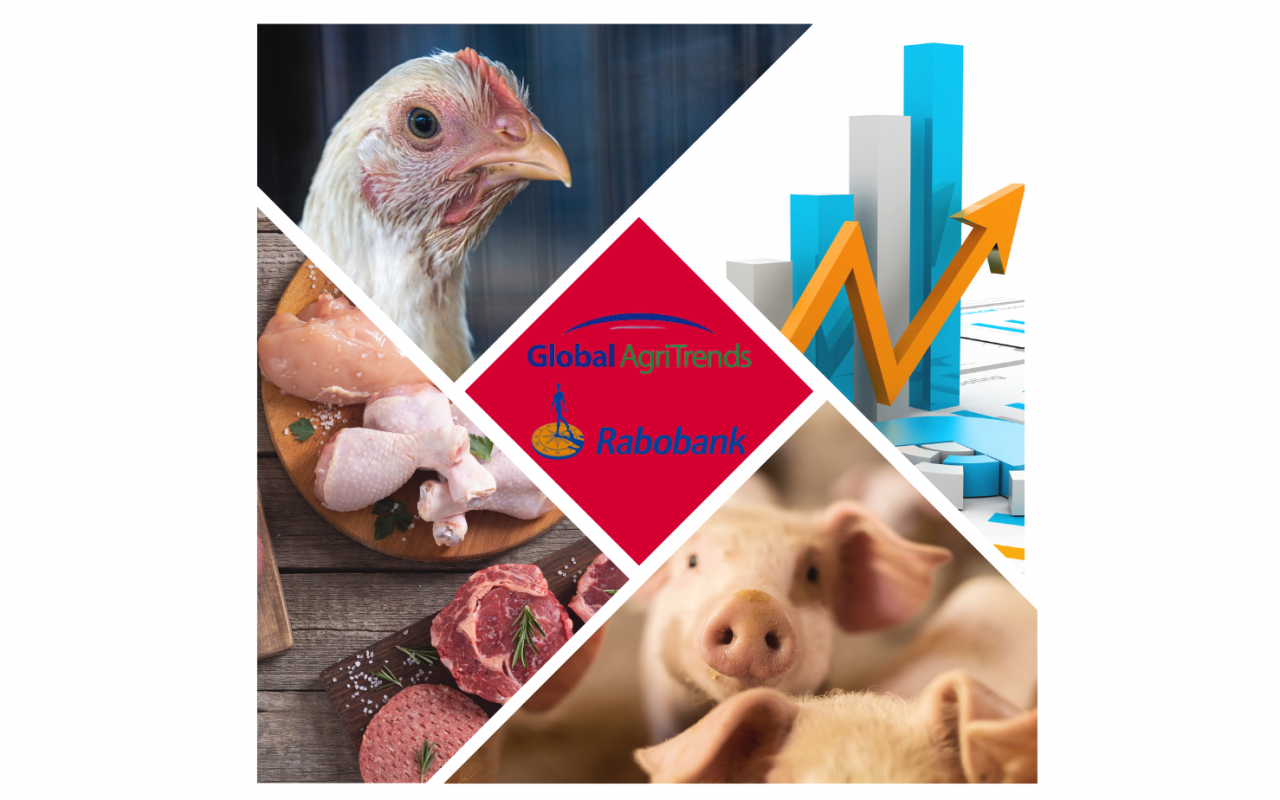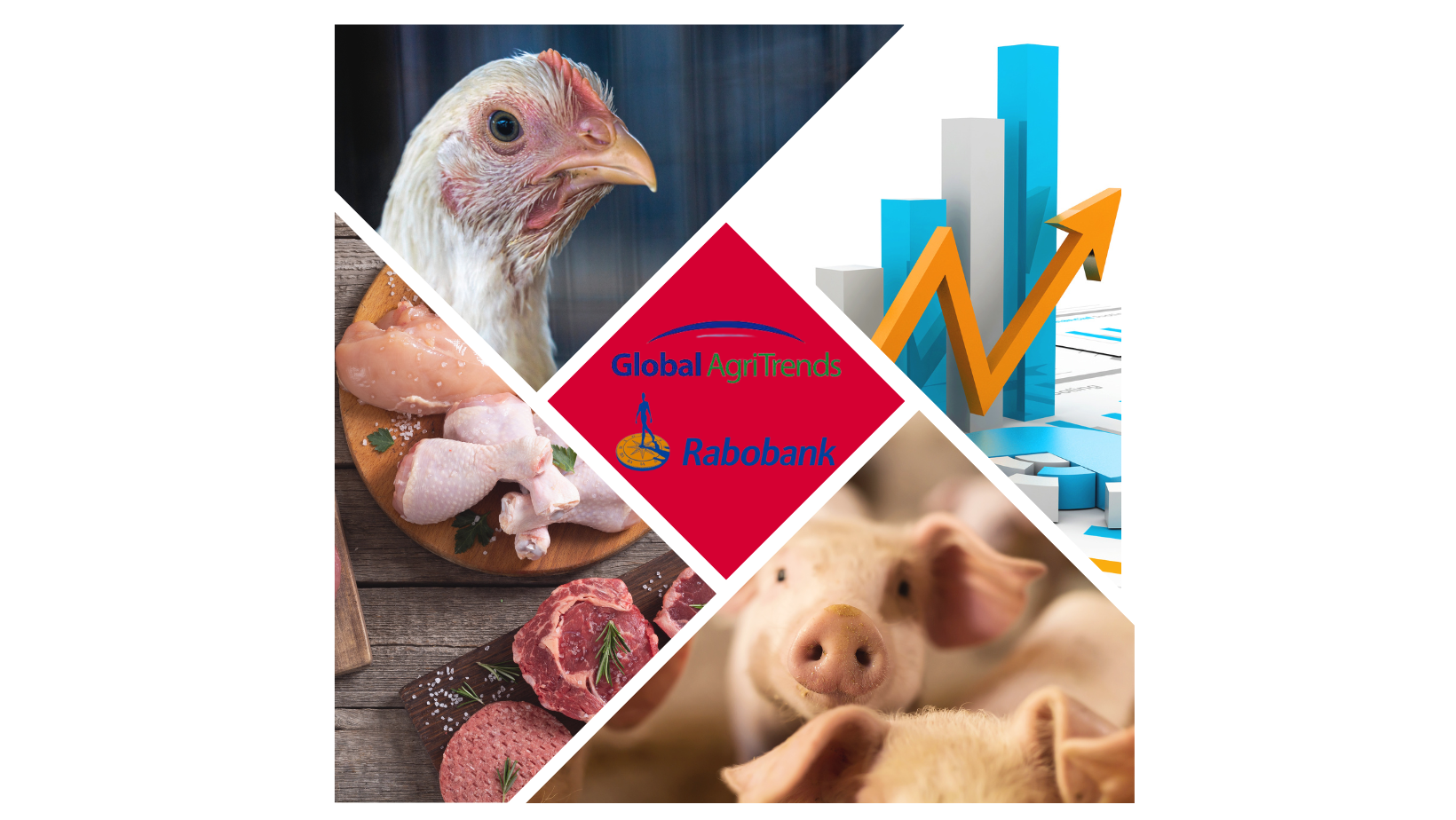
Rabobank and Global Agritrends forecast a challenging year-end for the pork industry and inflation pressure on demand in 2023
While the financial institution highlights that factors such as high production costs and limited product demand will be accentuated in the last quarter of 2022, Global AgriTrends’ CEO, Brett Stuart, analyzes the main macroeconomic conditions that have impacted pork producer margins worldwide in 2022. The global pork market has faced challenging conditions in 2022 and […]

While the financial institution highlights that factors such as high production costs and limited product demand will be accentuated in the last quarter of 2022, Global AgriTrends’ CEO, Brett Stuart, analyzes the main macroeconomic conditions that have impacted pork producer margins worldwide in 2022.
The global pork market has faced challenging conditions in 2022 and they are expected to continue until the year’s end. According to Rabobank’s global pork 2022 4Q report, producers will be cautious as global uncertainties rise, especially in terms of demand, as consumers face mounting pressures from inflation and the economic crisis that is impacting the world.
Similarly, renowned analyst Brett Stuart, CEO of Global AgriTrends, shared his analysis of the pork industry during an activity organized by ChilePork in Japan. He talked about the global price evolution of various food products, highlighting significant surges in universally used commodities and raw materials. However, when talking about the evolution of meat prices, he emphasized: “meat is the laggard, meat is the slowest to go up and goes up the least (…) We’re in a spot where all of the costs have inflated, the feed grains, all of these price increases have come up and put pressure on the margins, yet the meat prices have not kept pace. And so that has a big impact on supply.”
The analyst highlighted that although poultry and beef prices went up through 2021 and 2022, pork prices actually deflated, mainly because of China’s decisive influence. “Almost half of the world’s pork is in China and Chinese pork prices deflated from June 2021 right into 2022. So, the weight of that big Chinese deflation weigh down the global pork prices,” he said. This has certainly caused pork producers’ margins to be reduced worldwide.
Rabobank’s 2022 4Q Report highlights that inflation outpaces wage growth and this is expected to negatively impact protein consumption in the last quarter of 2022 and the first half of 2023.
It is expected for inflationary pressure to impact the demand for foodservice purchases, as the cost of food has risen in different parts of the world compared to wages, and people prefer to save their money for retail shopping instead of going out to restaurants or ordering takeout food.
High production costs are another challenge for pork, according to Rabobank, since this year-end is defined by disappointing harvests in the United States, parts of Europe, and Asia, which reduces grain and oilseed availability for feeding the animals. When analyzing the situation in the United States and other relevant pork producing countries, Stuart points out that “the high grain cost, the high inflation has caused producers to resist expansion. The production forecast is -2% for 2022, up 1% next year. So, if we look at the global swine production bases in Europe, in China, in the US, that’s three quarters of the global swine herd. The swine herd is smaller in 2022 and will likely be smaller again in 2023. Now, that generally leads to price increases over time.”
Rabobank states that the prospects of high operating costs combined with the limited demand will make companies more conservative in their strategies to increase production in 2023, which is a challenge for next year, but also for future production, as Stuart’s outlook shows.
“Here’s a 10-year outlook, and this is pretty simplistic, but what I did is I scattered plotted global meat and poultry consumption against global GDP. It correlates at a 0.99 R2: the more money that people make in the world, the more meat and poultry they eat. Now, this gets interesting because the IMF and the World Bank forecast GDP; so, if I take that GDP forecast and plug it into my trend line model, what it tells me is 22 trillion dollars of more GDP in the next 10 years generate 68 million tons more meat and poultry consumption. We are going to need 68 million tons more meat and poultry worldwide in the next 10 years; and the question is, can we get there?”
“My estimation is that global pork demand will increase 18 million tons, so what I’m suggesting over the next 10 years is we could see a significant shortfall between what is needed globally and what is produced for beef, pork, and poultry. What that means is to expect higher prices as we move through the next decade. It would be difficult to find ways to expand production around the world fast enough to keep up with the rising global middle class,” Stuart concluded.
